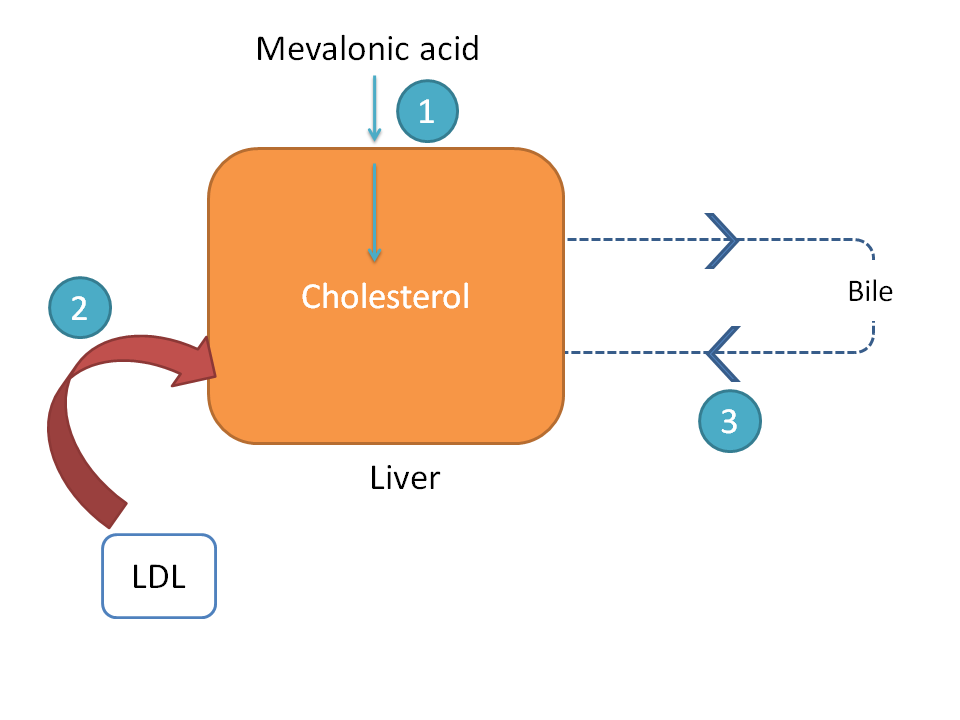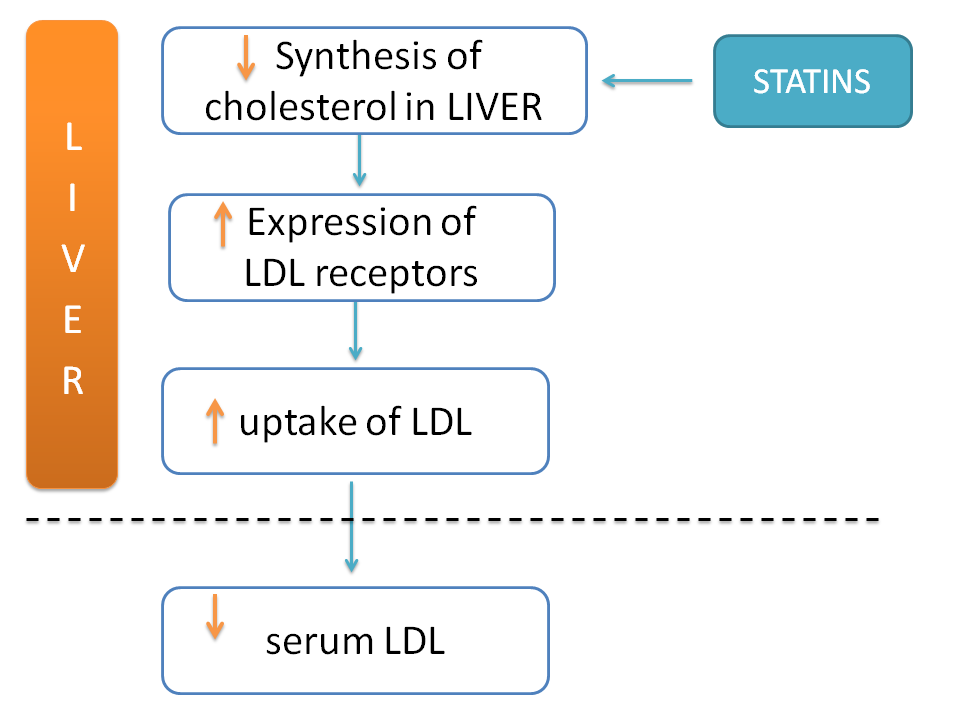How statins act as cholesterol lowering drugs?
by egpat Posted on 08-06-2017
Statins are one of the important cholesterol lowering drugs that occupy key role in therapy for high cholesterol. All these drugs are identified by the suffix “-statin” and drugs in this category mainly include simvastatin, lovastatin, atorvastatin, rosuvastatin and pravastatin. The main goal of all these statins is to lower serum cholesterol levels.
How it can be achieved?
Well, first of all let’s see how cholesterol is distributed within the body by various mechanisms and how statins stand as cholesterol lowering drugs by acting on any of these pathways.
Cholesterol distribution in the body
Three pathways play important role in storage and distribution of cholesterol within the body.

- Cholesterol biosynthesis in liver from mevalonic acid.
- Cholesterol uptake into the liver through LDL receptors
- Cholesterol secretion into bile
Cholesterol biosynthesis in liver
Synthesis of cholesterol in liver is one of the major mechanism by which its levels in the body are controlled. Mevalonic acid acts as one of the main precursors for cholesterol biosynthesis and it is obtained from HMG Co-A.
Here you can find one of the rate determining step, that is, conversion of HMG Co-A to mevalonic acid which is mediated by the key enzyme HMG Co-A reductase.
Mevalonic acid then by sequential steps can be converted into cholesterol which is then stored in the liver.
Since it is one of the key process in maintaining cholesterol levels in the body, it can act as a good target for cholesterol lowering drugs.
Cholesterol uptake by liver
This is another face of liver in controlling cholesterol levels in the body.
Liver can uptake LDL cholesterol which binds to the LDL receptors expressed on the liver.
This pathway again works by feedback mechanism and whenever cholesterol levels fall within the liver, it binds to LDL receptors increasing its uptake into the liver.
Biliary secretion of cholesterol
This is recycling mechanism of cholesterol in between liver and intestine. Cholesterol can be secreted into bile which then empties into the intestine.
Here some of the cholesterol is excreted into faeces but major portion is reabsorbed again into the liver.
Okay, these are three pathways by which cholesterol is distributed within the body.
Now, where these statins act to lower cholesterol levels?
How statins act?
Any one of the above three pathways can act as good targets for cholesterol lowering drugs used for atherosclerosis. By observing these pathways, you can easily understand that liver plays key role in cholesterol biosynthesis and storage.
So it’s not unnatural in thinking that the best cholesterol lowering drugs act on liver.
Yes, statins lower cholesterol levels in the body by acting on liver to inhibit its biosynthesis.
They inhibit one of the key enzyme in cholesterol biosynthesis i.e. HMG Co-A reductase . The later being a rate limiting enzyme, its inhibition can produce a marked effect in cholesterol levels.

How statins lower serum cholesterol levels?
It is well known fact that the risk of atherosclerosis increases with raised levels of LDL cholesterol in the serum. So cholesterol lowering drugs should reduce these LDL levels within the serum.
Quite differently, we have seen above that statins inhibit cholesterol biosynthesis in LIVER but how it affects cholesterol levels in serum?
Are they acting on any target in serum?
Definitely, no, they are not acting any target in serum level but still produce action on serum cholesterol.
Here second pathway comes into play.

By the action of statins, liver is getting less amount of cholesterol and it tries to take cholesterol from the serum. In order to take cholesterol, liver expresses more number of LDL receptors which uptake cholesterol into the liver.
In summary, statins are one of the cholesterol lowering drugs that act as HMG co-A reductase inhibitors thereby inhibit cholesterol biosynthesis in liver which indirectly increases the its uptake of into the liver finally resulting in fall of serum cholesterol levels.